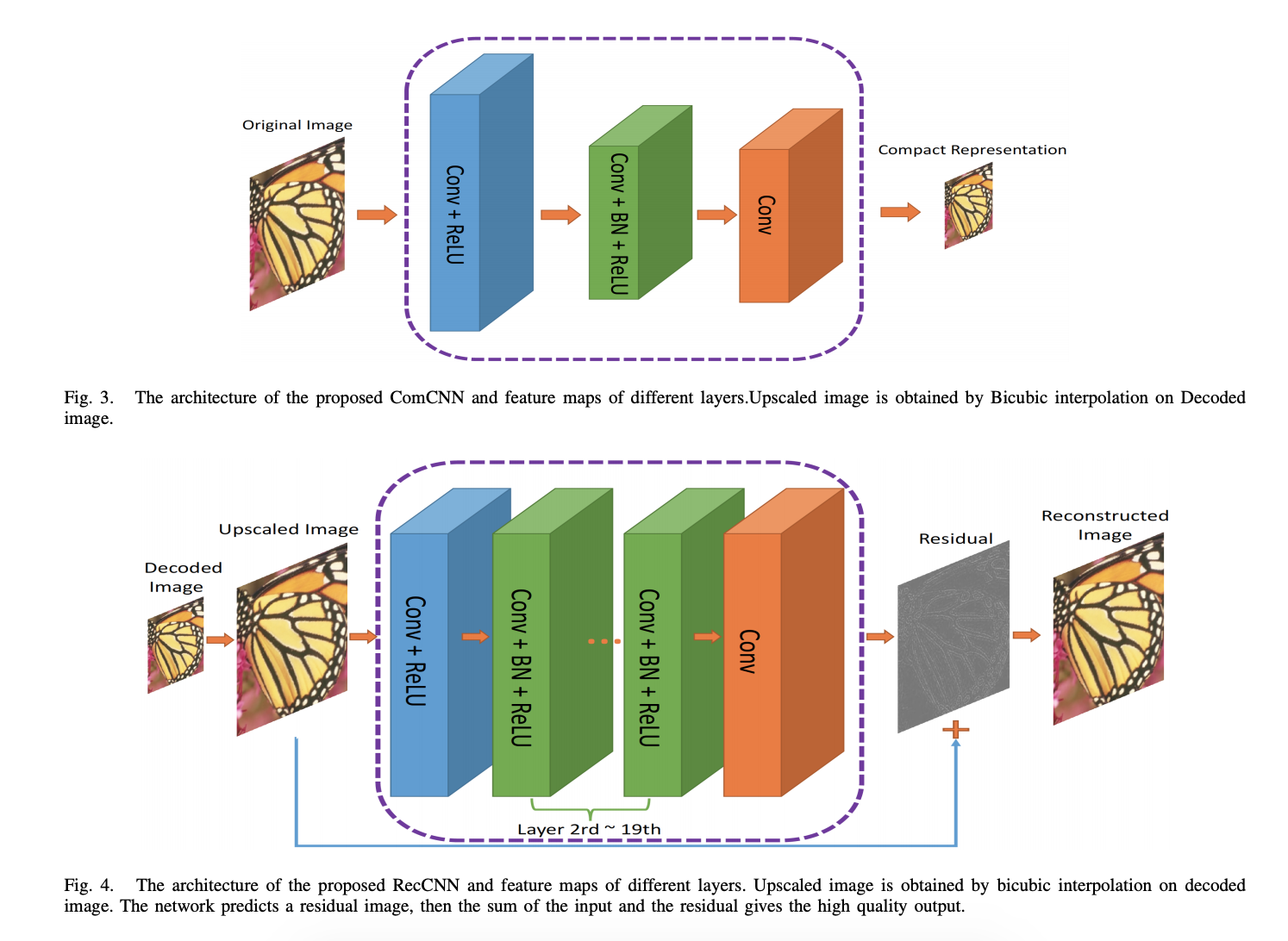Chris Pollett >
Students >
Deshmukh
( Print View)
[Bio]
[Blog]
[End to End Image Compression - PDF]
[Image compression using RNN - PDF]
Deliverable 1: Implement end-to-end image compression architecture in PyTorch
Description:
This is my implementation of end to end image compression framework[1] .
This code used following python libraries :
image==1.5.25
numpy==1.14.5
Pillow==5.2.0
python-dateutil==2.7.3
pytorch==0.1.12
torchvision=0.1.12
Below are the results obtained after training the network on CIFAR10 dataset. I used 20 epochs with the batch size of 16.
Inference results are as below :
Original and Final images :

Compact representation

All input images are of size 32 x 32.
This architecture uses two separate networks - comCNN for compression and recCNN for reconstruction. Residual learning is used in recCNN for faster learning process.
comCNN gives satisfactory results with 10 layers. Hence, in my openion additional layers were not required.
References :
[1] Jiang Feng, Et al. (August 2017). An End-to-End Compression Framework Based on Convolutional Neural Networks. IEEE Transactions on Circuits and Systems for Video Technology.. Harbin, China. arxiv e-archive.
[2] Caltech 101 dataset : http://www.vision.caltech.edu/Image_Datasets/Caltech101/